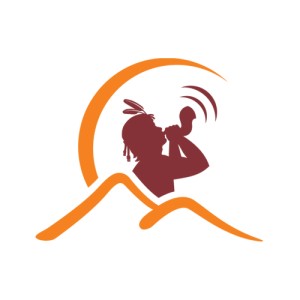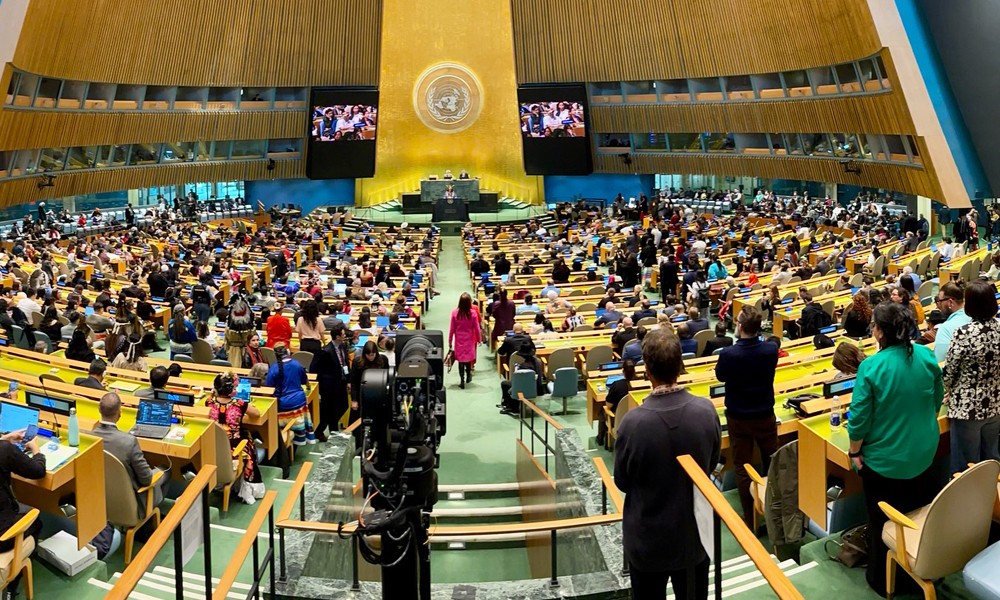Preparations are underway to celebrate the 31st International Day of the World’s Indigenous Peoples. Indigenous peoples around the world celebrate August 9 as a grand international festival annually after the resolution by United Nations to observe the day as International Indigenous Day.
The International Day of the World’s Indigenous Peoples has been observed since 1993 - which is marked as the International Year for the World's Indigenous People by the United Nations. The United Nations has chosen "Indigenous Youth as Agents of Change for Self-determination" as the theme for this year's celebration. The programs for International Day of the World's Indigenous Peoples have been planned accordingly. So far, Nepal has not issued any formal notice regarding the celebration of the day.
The selection of the theme for this year's International Indigenous Day brings into focus the background that United Nations resolution and other international agreements regarding indigenous rights have acknowledged the right to self-determination as one of the fundamental rights of indigenous people.
The concept note published by the United Nations Permanent Forum on Indigenous Issues states that while indigenous youths are working as agents of change at the forefront for all kinds of pressing issues yet they are also facing a variety of tough challenges. In particular, it notes that the adverse effects of indigenous people by colonization has spilled over to indigenous youths as well.
There is a high probability that the future of indigenous youths will be severely impacted by climate change crisis, environmental impact on the land of indigenous people, and the extraction of minerals and other natural resources within their land and territory.
There is a high probability that the future of indigenous youths will be severely impacted by climate change crisis, environmental impact on the land of indigenous people, and the extraction of minerals and other natural resources within their land and territory. The permanent forum also expressed concern about youths facing multiple barriers like inaccessibility to justice, loss of traditional spirituality and faith, and loss of languages and culture.
There is poor representation of indigenous youths even within their own indigenous organizations. Mainly, the indigenous youths who reside in rural areas are unaware about indigenous movements. Whatever indigenous movements have taken place, they are more city oriented and populist in nature. In context of Nepal, the news of such movements hardly make it to core indigenous settlements and villages. The indigenous movement in Nepal has failed to create a positive image due to extreme politicization and party politics.
There is no dearth of voices accusing the Indigenous Movement as "dollar driven" and "party-led". Amidst this bleak reality, there is a need for this year's International Indigenous Day to inspire positivity towards indigenous movement and reshape the movement.
The purpose of celebrating this day is to protect indigenous people all over the world from the adverse effects caused by globalization, modernization, privatization, market oriented production system and environmental degradation on their social, cultural, economic, political and physical life, to develop them and to protect and promote their rights, language and culture.
Achievements of Nepal's Indigenous Movement
The indigenous and identity movement in Nepal is very weak and exhausted at present. Although the movement has a glorious and fruitful history, it is now in a very weak state. Looking back, Nepal's indigenous movement around 2001 and the whole decade following that is very important and has resulted in various successes. Due to the pressure of indigenous movement, the then Nepal government had bowed down to various demands and issues of indigenous people.
Due to the pressure of this indigenous movement, the Nepal government prepared a list of 59 indigenous communities and gave them legal status. Then the government went ahead to establish the National Foundation For Development of Indigenous Nationalities, declare Nepal as a secular state, adopted proportional representation election system and inclusive policy, passed the International Labor Organization's Convention -169 and United Nations Declaration on the Rights of Indigenous Peoples 2007 through its parliament, reached a 20-point agreement with indigenous people, made special reservation provisions for indigenous people in education, health and public service sector, and implemented the policy of teaching in mother tongue.
There has been a resurgence of state's ethnic, linguistic, religious and cultural discrimination against indigenous people.
As a result of the adoption of proportional representation election system and inclusive policy by the government after pressure from the indigenous movement, 218 out of a total 601 seats of the constitution assembly was won by indigenous candidates. This can be considered as a historic achievement of Nepal's indigenous movement. Due to these achievements, Nepal's indigenous movement can be considered more fruitful compared to indigenous movements in other countries.
But as the indigenous movement in Nepal has begin to weaken, the gains that were made after the movement is now slowly limited to legal documents and agreements only without implementation. The rules and regulations which the government created for indigenous rights and services, and the various deals and agreements it made is not implemented, and the government has not fulfilled its promises. In this regard, the achievements made by the movement does not have much value.
There has been a resurgence of state's ethnic, linguistic, religious and cultural discrimination against indigenous people. Indigenous people's demand of identity-based federalism has not been fulfilled. The constitution was not able to be inclusive. Nepal's extremist Hindu rulers are trying to revert Nepal back into a Hindu state by forcing a descriptive narrative of Nepal's secularism in the new constitution of 2072 that was already ensured by the interim constitution and by continuing to make cow as the national animal. It has also disparaged other languages by giving special rights to the Nepali language as the state's official language.
It is the duty of a state to protect a citizen. But the government of Nepal is not a protector of people, instead it has become an enemy which is clear from the murder of Padam Bahadur Lajehang during the identity movement that is ongoing in Province 1. In the peaceful protest, protestors have been beaten with police batons and boots while in some places dozens have been injured due to gun shot wounds.
Another example is the incidence that took place in 2076 Shrawan 1 and 4 in Chitwan's Rapti and Madi municipalities in Chepang settlements.
Extremely marginalized Chepang families are a victim of national parks and they were forced out of their land in the name of forest conservation rendering them homeless. 24 year old Raju Chepang lost his life to severe beatings by park rangers when he was foraging for snails and wild herbs around Rapti river having nothing else to eat at his home.
Similarly, in the name of conservation, the park rangers have set fire to and used elephants to demolish Chepang houses in Chitwan Madi municipality ward-9 who have been living besides the Kusum river for years, and rendering them homeless during peak monsoon season.
These instances prove that the Nepali state is rigid, insensitive, cruel, ignorant, intolerant and discriminatory towards indigenous communities. No amount of criticism and dissent is enough for these types of vile and unjust actions that the state has done and continues to do.
Main agenda of Indigenous Movement
Like its predecessors, the current coalition government is also unyielding, intolerant and aggressive towards indigenous communities in Nepal. The current government has cut down the rights that were gained from previous movements and has taken away state benefits and services.
In the name of development and road expansion, the government has destroyed natural resources like land, water, forest and minerals from indigenous lands and territories, brought environmental degradation, has illegally destroyed the indigenous people's cultural and historical heritages and civilization, has encroached upon the ancestral lands of indigenous peoples and have displaced them from their lands.
The current coalition government has continued the forced displacement of the indigenous Newar people from their ancestral land in Khokana and forcefully land grabbed their farmlands without their prior informed consent and proper compensation in the name of fast track road construction, transmission line construction, dry port construction and smart city development despite huge protests from the indigenous community. Despite Nepal being a secular state, indigenous people continue to be punished according to the Panchayat era law for killing cows. These show that this present government has continued to be hostile towards indigenous populace.
These actions by the government are in direct violation of the fundamental rights on property ensured even in Nepal's regressive constitution, the International Labor Organization's Convention -169 which Nepal also ratified in 2007 and the United Nation's Joint Declaration.
Indigenous population will again be the most affected by the MCC project which has been forcefully passed by Nepal's parliament. A protest has been ongoing against this in Shankarapur of Kathmandu since a long time ago. The 200 Tamang households of this area are agitating.
Nepal's indigenous population is hurt by the current Nepali state's injustice, atrocity, exploitation, suppression, murder, violence, discrimination and exclusion.
Nepal's indigenous population is hurt by the current Nepali state's injustice, atrocity, exploitation, suppression, murder, violence, discrimination and exclusion. But the indigenous movement which used to rise up strongly to fight against all these state atrocities is now almost lifeless. Indigenous organizations are inactive while indigenous leaders and activists have also remained largely silent.
It can be seen that they are running around political parties and governments for their own personal gains rather than fighting for indigenous rights. On the surface they continue to sloganeer that there's no alternative to protest for indigenous rights but hardly any of them are committed to creating an environment that will strengthen the indigenous movement.
Therefore, the indigenous movement has now gone on the defensive. In this light, it is no surprise that the state is dominating indigenous people and that the achievements of the past are also being erased. Even in this dire situation when the state has carried out injustice, atrocity, exploitation, suppression, murder, violence, discrimination and exclusion to Nepal's indigenous population, if the indigenous people continue to remain silent for petty personal gains then in Nepal not only will the indigenous communities lose their rights, benefits and services, but may also very well lose their identity and existence.
There are now constitutional and state agencies like Indigenous Nationalities Commission, Language Commission, Inclusion Commission, National Foundation For Development of Indigenous Nationalities, Monastery Development Committee, Bauddha Area Development Committee concerned with indigenous people. But these agencies are known more for working for the government and for giving jobs to political cadres. They have not done a day's work in indigenous issues.









